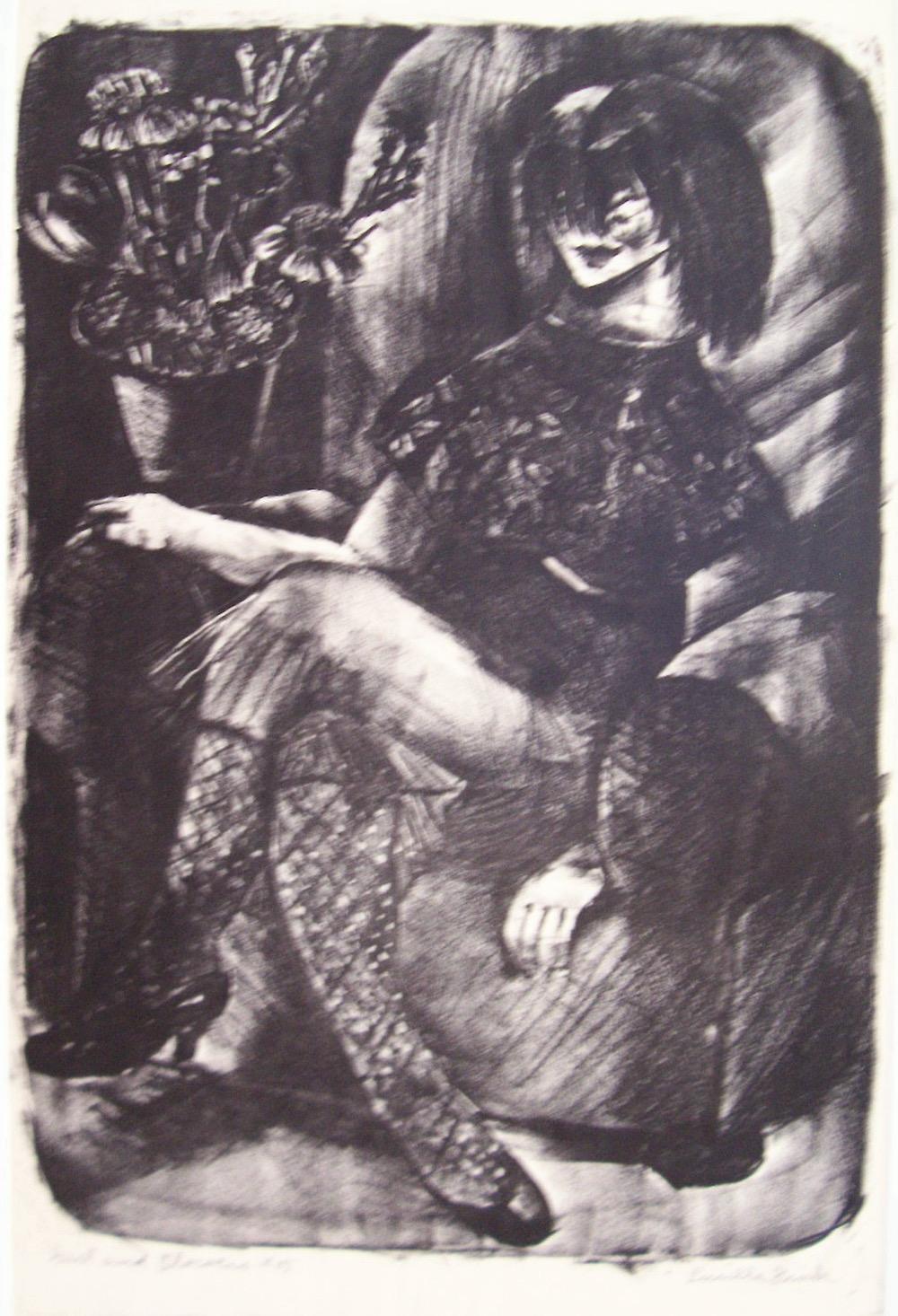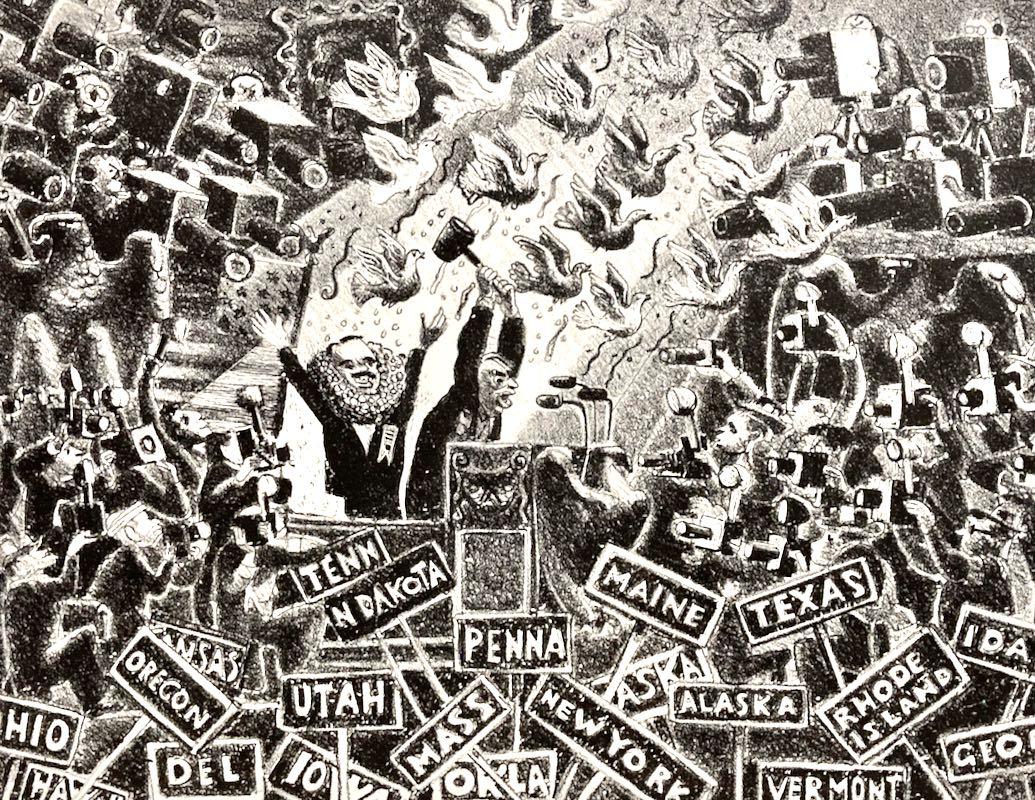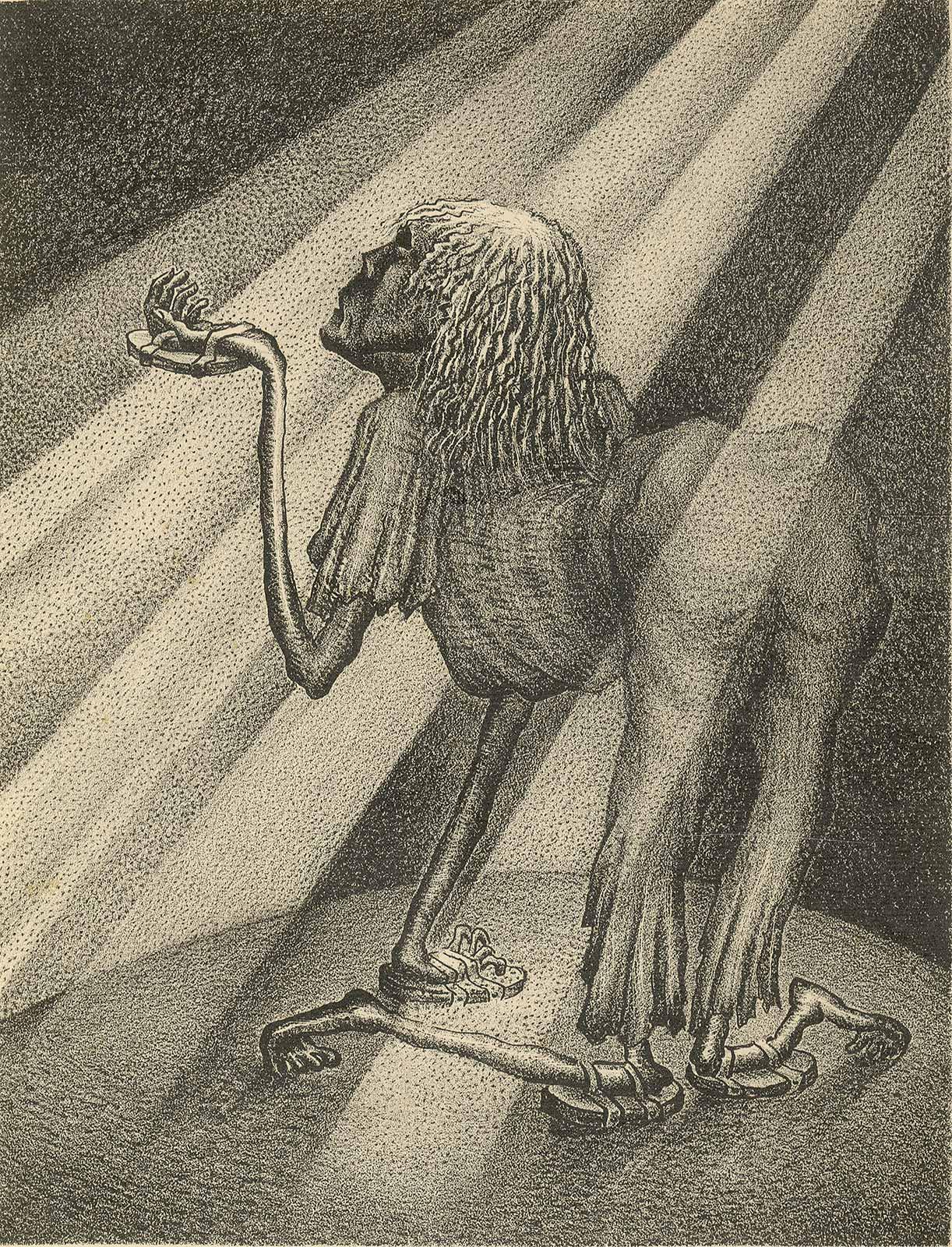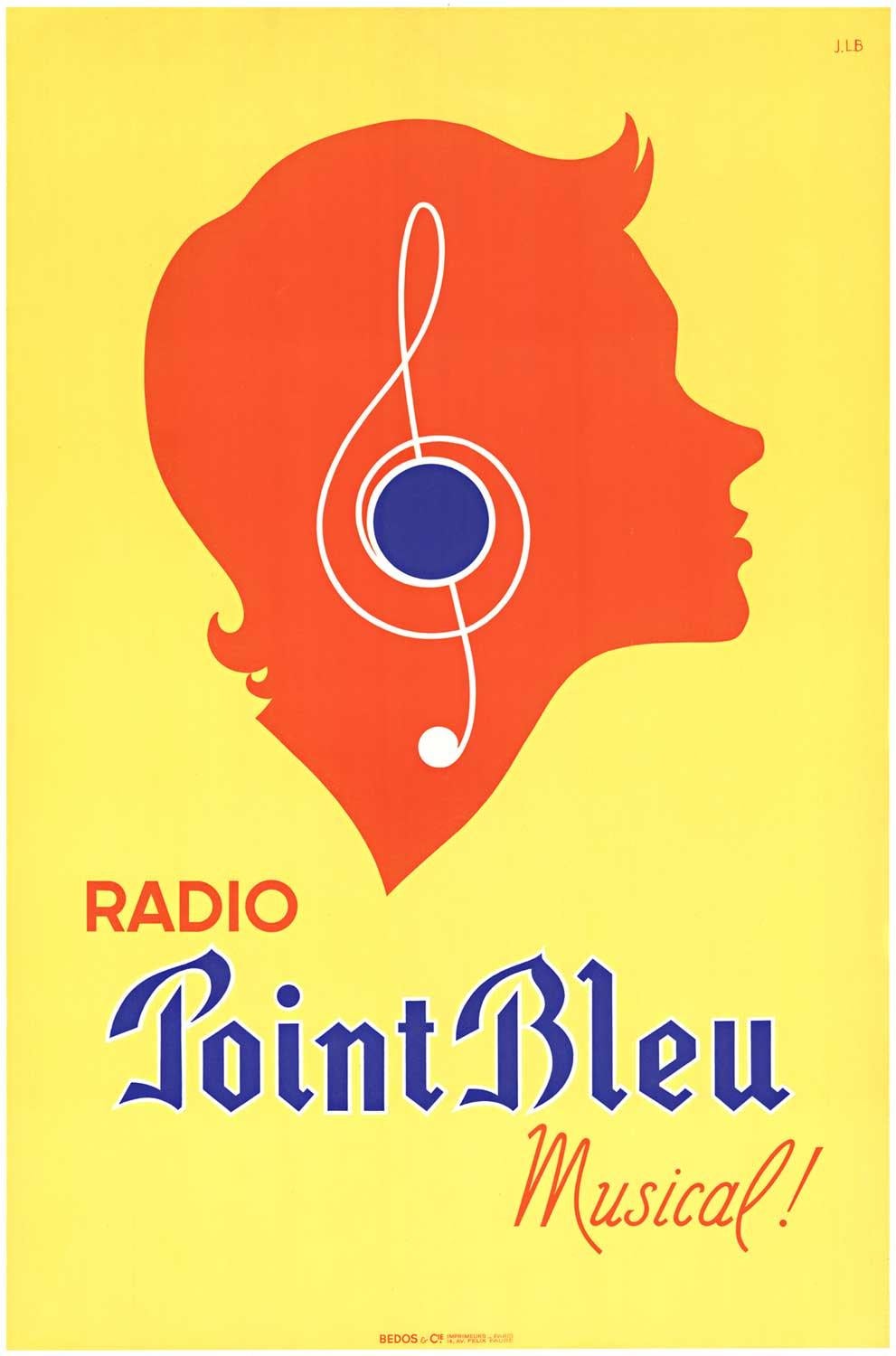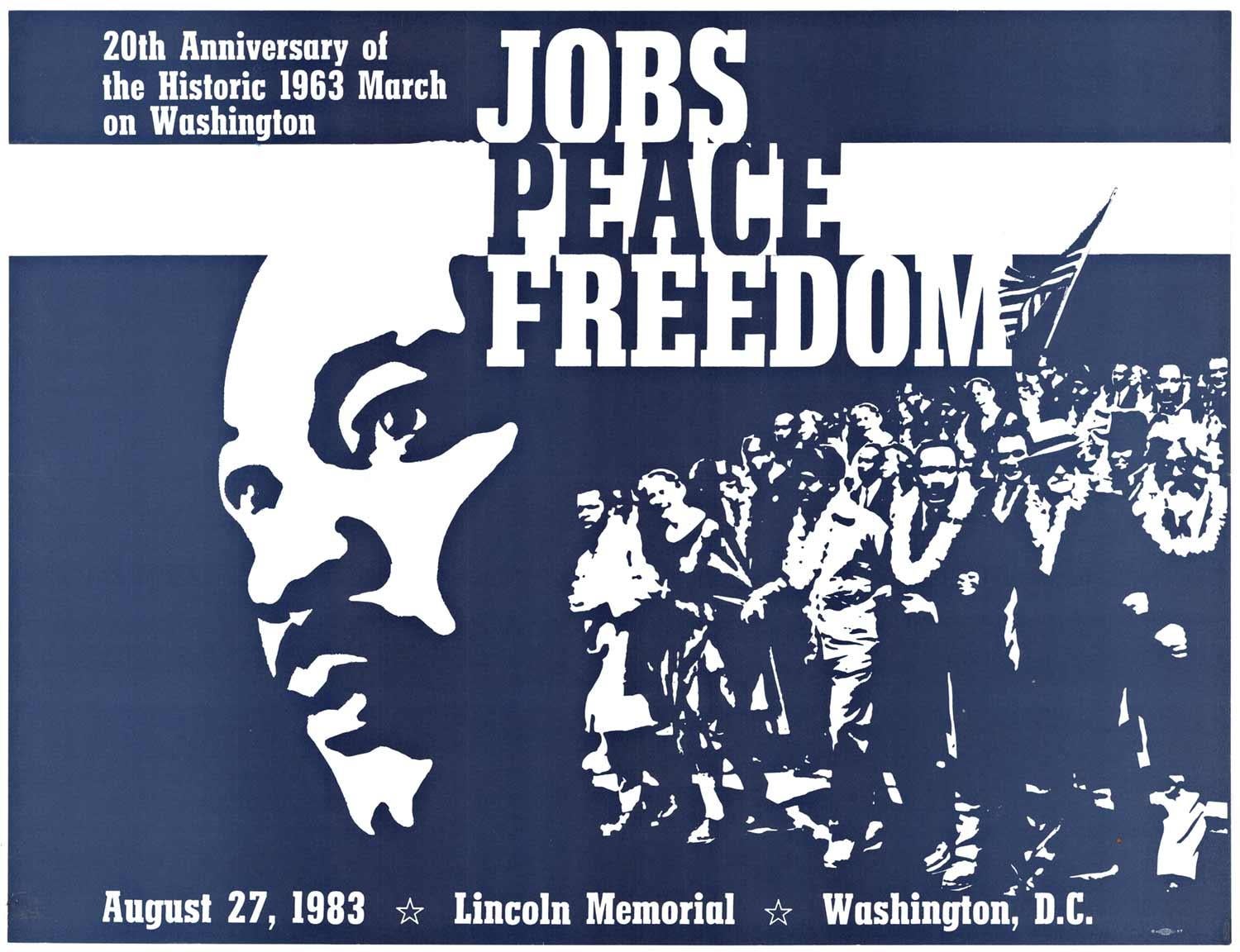George GroszLarge George Grosz 1923 Lithograph Die Rauber German Expressionism WPA Realism 1922-1923
1922-1923
About the Item
- Creator:George Grosz (1891-1969, German)
- Creation Year:1922-1923
- Dimensions:Height: 25.5 in (64.77 cm)Width: 19 in (48.26 cm)
- Medium:
- Movement & Style:
- Period:
- Condition:good, minor wear. please see photos.
- Gallery Location:Surfside, FL
- Reference Number:1stDibs: LU38212492202
George Grosz
George Grosz was a German artist known especially for his caricatural drawings and paintings of Berlin life in the 1920s. He was a prominent member of the Berlin Dada and New Objectivity group during the Weimar Republic. Grosz studied drawing at the Dresden Academy (1909–11) and at the School of Arts and Crafts in Berlin (1912–14). He was in the army from 1914–15, and again for a short time in 1917, but spent the rest of the war in Berlin, where he made violently anti-war drawings, in which his main focus was attacking the social corruption of Germany (capitalists, prostitutes, the Prussian military caste, the middle class). His artworks had great impact in the Berlin Dada movement, 1917–20, and collaborated with John Heartfield and Raoul Hausmann in the invention of photomontage.
Many of Grosz’s drawings were published in albums (Gott mit uns, Ecce Homo, Der Spiesser-Spiegel, etc.), and he was subject to prosecutions for insulting the army and blasphemy. He visited the United States in 1932 to teach at the Art Students League, New York, and settled there in 1933. In the latter part of his career, he tried to establish himself as a pure painter of landscapes and still life, but also painted many compositions of an apocalyptic and deeply pessimistic kind. His role in the Berlin Dada movement affected political outlooks and artistic developments not only in Germany, but also in Russia, the Balkan nations, and parts of France.
Grosz's penetrating, darkly humorous style of drawing and his use of satire as a weapon left a deep impression on the work of his contemporaries and the artists of the next generation. Some of his works from the early 1940s, particularly during World War II, do present an allegorical and dramatic representation of Grosz's moral perspective regarding war. Additionally, some of his last pieces from 1958 were photomontages, and hearken back to his earlier Dadaist aesthetic and message, passing judgment upon consumerism and suggesting that his absorption with American culture had ended in disappointment. In 1959, Grosz sold his house and moved back to Berlin. He died shortly after his return, after a fall down the stairs.
- ShippingRetrieving quote...Ships From: Surfside, FL
- Return PolicyA return for this item may be initiated within 3 days of delivery.
- Large George Grosz 1923 Lithograph Die Rauber German Expressionism WPA RealismBy George GroszLocated in Surfside, FLFrom The robbers. lithographs by George Grosz for the drama of the same name. photolithography on laid paper. 19 X 25.5 inches (sheet size). This is not hand signed or numbered in ...Category
1930s American Modern Figurative Prints
MaterialsLithograph
- Large George Grosz 1923 Lithograph Die Rauber German Expressionism WPA RealismBy George GroszLocated in Surfside, FLFrom The robbers. lithographs by George Grosz for the drama of the same name. photolithography on watermarked paper. 19 X 25.5 inches (sheet size). This is not hand signed or numbe...Category
1930s American Modern Figurative Prints
MaterialsLithograph
- 1970s Pop Art "Dancing Lessons #2" Silver Silkscreen Mod Ballet Girl PrintBy Joanne SeltzerLocated in Surfside, FLPrinted on a slightly reflective metallic silver finished paper. there is a companion piece on a money green paper. A depiction of a ballet dancer, superimposed upon canceled dance c...Category
1970s American Modern Portrait Prints
MaterialsScreen
- Pulitzer Prize Winner Norman Mailer Portrait Etching Line DrawingBy Knox MartinLocated in Surfside, FLSigned. Numbered line etching Norman Kingsley Mailer (January 31, 1923 – November 10, 2007) was an American novelist, journalist, essayist, playwright, film-maker, actor, and libera...Category
1970s American Modern Figurative Prints
MaterialsEtching
- Golda Meir Israeli Woman Prime Minister Smoking Cigarette Ink Line Etching PrintLocated in Surfside, FLGolda Meir, Israeli Zionist leader, Prime Minister and feminist icon, smoking a cigarette. Nancy Drosd is a painter working in New York City. Since 2001 s...Category
1970s American Modern Figurative Prints
MaterialsEtching
- Jewish Shtetl Mother-in-law Klezmer Wedding Dance Judaica Lithograph Yiddish WPABy William GropperLocated in Surfside, FLHand signed in pencil and numbered. A very small edition. Old Lower East Side of New York or East European Shtetl. Jewish Shtetl Hasidic Klezmer Musicians. humorous Yiddish Chassidic art. The New-York born artist William Gropper was a painter and cartoonist who, with caricature style, focused on social concerns, and was actively engaged in support of the organized labor movement throughout his career. This original color lithograph print is done in the iconic style of the artist's oeuvre. Born to Harry and Jenny Gropper in 1897, William was raised in New York City's Lower East Side. His parents were Jewish immigrants from Romania and Ukraine, and young William grew up in relative poverty, watching his family struggle to achieve that sought-after American dream. His father, a bright and college-educated man, was unable to find employment that worthy of his intellect. His mother, meanwhile, worked as a seamstress from home. Coupled with the devastating loss of an aunt to the infamous Triangle Factory fire of 1911, significant childhood factors created the foundation that led to Gropper’s exploration of the American experience. Early on, Gropper displayed an extraordinary, natural skill for art. By 1912, he was already studying under the instruction of George Bellows and Robert Henri at the Ferrer School in Greenwich Village. During his time at school, Gropper was also awarded a prestigious scholarship to study at the National Academy of Design. However, he refused to fit into convention and was swiftly expelled from the Academy. After his expulsion, Gropper returned home to help financially by assisting his mother and taking a shop position. However, he didn't abandon art academia and soon presented a portfolio to the New York School of Fine Art which earned him a scholarship for study. Gropper obtained his first significant job as a cartoonist for the New York Tribune in 1917. While working as a staff cartoonist for the Tribune, he also contributed drawings to publications like Vanity Fair, New Masses, The Nation, and Freiheit. His interest in the welfare of the American worker, class inequality, and social injustice was central in his work. After publishing the graphic novel Alley Oop in 1930, Gropper's illustration career extended well into the decade. However, he was never exempt from controversy, and his 1935 Vanity Fair cartoon; prompted anger from the Japanese government. As an involved labor organizer and Social Realist activist, Gropper continued to bring attention to his radical reputation with visits to the Soviet Union and Poland. However, his concern with European politics and U.S. social causes didn't slow down his artistic career, and by the late 1930s, he had produced significant murals for American cities like Washington D.C. His 1938 mural Construction of a Dam was commissioned for the Department of the Interior and represents the Social-Realism style that depicts experiences of the worker and everyday societal life. Measuring at a staggering 27ft by 87ft, the piece portrays muscular, robust American laborers scaling rocky hillsides, building infrastructure, and operating heavy machinery. The mural feels undeniably American with golden scenery, denim blues, and steely gray colors. Gropper fits perfectly into Social-Realism because the style exhibits an illustrative flair with strong lines and simple, bold hues. The inspiration for Construction of a Dam sprang from his 1937 travels to the poverty-stricken Dust Bowl area. The trip was sponsored by a Guggenheim Foundation Fellowship, and his drawings of the Grand Coulee and Boulder Dams...Category
Mid-20th Century Modern Figurative Prints
MaterialsLithograph
- Lucille Fink, Girl with FlowersBy Lucille FinkLocated in New York, NYLucille Fink creates densely drawn compositions, often a little off-beat. Signed and titled. Dated on the reverse.Category
Early 20th Century American Modern Figurative Prints
MaterialsLithograph
- Alfred Bendiner, ...And So..., 1948, Republican Convention nominating DeweyBy Alfred BendinerLocated in New York, NYThe full title really should be ...And So I Give Your The Next President of the United States. The scene is the Republican Convention, in Philadelphia, in 1948. There are so many fas...Category
Mid-20th Century American Modern Portrait Prints
MaterialsLithograph
- SurvivorBy Caroline DurieuxLocated in New Orleans, LACaroline Durieux's "Survivor" is a pencil-signed lithograph created in 1947 in an edition of 20. It is illustrated in Carl Zigrosser's book on the artist published in 1949. Durieux on Survivor "An extra-terrestrial spotlight falls on this battered subhuman figure; he does not look directly into the light but away from it, raising his hand to it like a beggar. The worn pads on his hands and knees shows that he has walked on them, like an animal, for a long time. There is nothing to suggest that he can stand. The beam of light looks cold, machine like, impersonal. Scornful satire marks the limit of comedy for '. . . there is nothing funny about scorn which comes round again almost to the attitude of divine comedy.' Caroline Durieux (American, 1896 – 1989) Printmaker, painter, satirist, innovator, social activist, Caroline Durieux was born in New Orleans and was already making sketches by the age of four. Her formal art training was at Newcomb College (1912-1917) and the Pennsylvania Academy of Fine Arts (1918-1920). Carl Zigrosser of the Philadelphia Museum of Art encouraged Durieux to try lithography. While living in Mexico, she learned lithography from Emilio Amero...Category
1940s American Modern Figurative Prints
MaterialsLithograph
- Third Liberty Loan, My Daddy Bought Me a Government Bond original World War 1Located in Spokane, WAOriginal WW1 poster: MY DADDY BOUGHT ME A GOVERNMENT BOND OF THE THIRD LIBERTY LOAN. DID YOURS? Archival linen-backed and in very good condition. Print...Category
1910s American Modern Portrait Prints
MaterialsLithograph
- Original "Radio Point Bleu Musical!" vintage French poster, linen backedLocated in Spokane, WAOriginal “Radio Point Bleu Musical!” vintage French antique poster. Archivail linen backed in very fine condition, ready to frame. Signed J.L.B. in the plate at upper right. No specific year is indicated on the poster. Point Bleu / Radio Musical! Paris: Bedos & Cie. Lithograph poster for the French radio manufacturer, showing a woman’s face in silhouette with a treble clef over her ear; red and blue lettering against a bright yellow background. Printer: Paris: Bedos & Cie. The poster does not have a date, but most of the Point Bleu radio posters...Category
1940s American Modern Portrait Prints
MaterialsLithograph
- Original "Jobs, Peace Freedom" vintage poster. 20th Anniversary of 1963 MarchLocated in Spokane, WAOriginal Jobs, Peace, Freedom. 20th Anniversary of the Historic 1963 March on Washington. August 37, 19983. Lincoln Memorial, Washington, D.C...Category
1980s American Modern Portrait Prints
MaterialsLithograph
